Important rivers of Karnataka
–by Poulami Sengupta
–Reading Time – 16 min Approx
Karnataka is a river-based state where rivers are used for both household purposes and drinking. This is significantly helpful for agricultural purposes and also acts as a source of transport in specific areas.
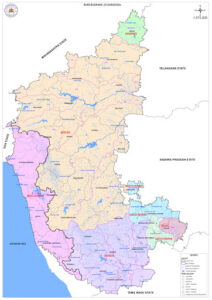
The numerous important rivers in Karnataka are also a principal source of hydropower generation and are important for the tourism industry of the state.
List of the important rivers of Karnataka:
Most Rivers of Karanataka source from the Western Ghats and run towards the east. Some of the major rivers flow towards the Bay of Bengal. So, all the significant inter-state rivers are east-flowing. The major lifelines of Karnataka are bestowed, with the flow of seven critical river systems are Krishna, Cauvery, Godavari, Palar, North Pennar, South Pennar. These six rivers combinedly constitute the principal drainage system of over 87% of the state. Cauvery is also the largest river in Karnataka.
There are certain west-flowing rivers too. The Western Ghat rivers flow towards the west, meeting the Arabian Sea, running approximately between 50 km and 300 km. The steep upper banks and fairly steep middle banks are the significant characteristics of these rivers. The gradients turn comparatively flat near the sea with a mild flood plain.
East Flowing Rivers of Karnataka:
Cauvery or Kaveri is one of the most important rivers in Karnataka. It sources from the Coorg district. This river is termed as “Dakshin Ganga” or the “Ganges of the South”. The total length of the river is 320 km with the area of the river bed being 36,139 sq. km. It is noted for its sacredness. The origin of this river is called Talakaveri. It is an important tourist and pilgrimage spot. It is located amidst the serenity of the Brahmagiri Hills near the Madikeri area of Coorg. Some of the most important tributaries of the Kaveri river include:
- Harangi
- Heamvathi
- Lakshmanatirtha
- Kabini
- Shimsha
- Arkavati
- Suvaranavathi
- Honnuhole
- Bhavani
- Lokapavani
- Noyyal
- Amaravati
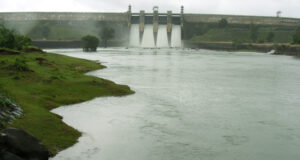 Krishnarajasagara Dam on the Kaveri river is the most important dam in Karnataka. The significant waterfalls here include Chunchunakatte, Gaganachukki, Shivanasamudra, Bharachukki, and Hogenakkal.
Krishnarajasagara Dam on the Kaveri river is the most important dam in Karnataka. The significant waterfalls here include Chunchunakatte, Gaganachukki, Shivanasamudra, Bharachukki, and Hogenakkal.
Kabini is an important east-flowing tributary of Kaveri. Originating in Pakramthalam hills in Wayanad, Kerala, Kabini meets Kaveri at Tirumakudal Narasipur. The important sub-tributaries are Taraka, Gundal, Nugu, and Hebballa. The important dams of this river are Beechanahalli Village, Kabini Dam, Mysore, Heggadadevankote Taluk.
Krishna is the second biggest river in Karnataka and in the entire peninsular region of the country. The total length of the river is 483 km. with a river bed area of 1,13,030 sq. km. It sources in Maharashtra, crossing through Karnataka. South India is chiefly dependant on Krishna for hydroelectricity, agriculture, and household purposes. Some of the major tributaries of Krishna in Karnataka include:
- Ghataprabha
- Malaprabha
- Bhima
- Tungabhadra
- Koyna
- Doni
The significant dams on this river are Narayanpura Dam and Almatti Dam.
Tungabhadra is the most significant tributary of Krishna, originating in the district of Shimoga. It is the result of the union of the two rivers—Tunga and Bhadra. Tungabhadra is east-flowing, cutting through the Deccan Pleatue region. It meets Krishna in the Kurnool district of Andhra Pradesh, ultimately meeting the Bay of Bengal.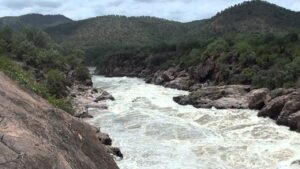
Major sub-tributaries of Tungabhadra are Varada, Kumudvathi, Vedavathi, Swarnamukhi. There are several dams constructed across the river including Tunga, Bhadra, Vilasa, Vani, Anjanapura. The total length of the river is 483 km., and the area of the river bed is 1,13,030 sq. km. It is noted for its sacred importance.
Ghataprabha originates in the Western Ghats and flows eastwards to meet Krishna. It is noted for forming the famous Gokak Falls in the Belgaum district. The important sub-tributaries of this river include Markandeya and Hiranyakeshi and Hidkal Dam is built upon it. The river’s total length is 216 km with an area of 8829 sq. km. The borders of the Ghatapravaha bird sanctuary line the course. The Godchinamalaki Falls near Gokak is what makes this river famous among the tourists.
Malaprabha river sources in the Kanakumbi area of Khanapura Taluk, in the Belgaum district. It primarily flows eastwards and then north-easterly, meeting Krishna at Kudalasangama. The total length is 304 km with an area of 11,540 sq. km. The significant sub tributaries include Benni Halla, Hirehalla, Navilatirtha. The Malaprabha dam and Navilatirtha dam are based on this river. This river is another sacred spot for the pilgrims.
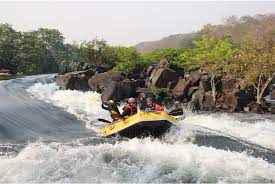
Bhima originates in the dense wilderness of the Bhimashankara forest in Pune, cutting through both the states of Maharashtra and Karnataka. It meets Krishna near Kudlu, Raichur Taluk. Bennithora is a significant sub-tributary of the river. The area of this river is 18,315 sq. km with a length of 298 km. Its contribution to agriculture is extremely noteworthy.
Doni originates in the Datta Patana region of Maharashtra, covering two states of Maharashtra and Karnataka. The Chhaya Bhagavati Falls of 122m height is a significant highlight of the river. The length of the river is 176 km. The river water lacks purity, making it unsuitable for drinking or agricultural purposes. This has often proven to be problematic during floods.
Arkavati originates in the Nandi Hills of the Chikkaballapur district of Karnataka. The major sub-tributaries include Vrishvavathi, Suvaranmukhi, and Kumudavathi. It joins Kaveri in Kanakapura in the Ramanagara district. The length of the river is 161 km. and the area is 4351 sq. km. This river mainly flows in the surrounding areas of Bengaluru, however, the expansion of the city has lead to the drying of certain areas of the river.
The Suvarnavathi river originates in the Nasurghat Hills in Mysore. Some of the important dams upon this river are Chamrajanagar Dam and Suvarnavathi Dam. The total length of this river is 88 km. It is also known as Honnuhole. This river water is exclusively used for agriculture, household purposes, etc. The beauty of the Suvarnavathi Reservoir never fails to strike the tourists with awe.
Hemavati originates in the Chikmagalur district, Karnataka. Lokapavani river is a significant sub-tributary. Gorur Dam is a major dam built across this river. The total length of Hemavati is 245 km, and the area of the river bed is 5,419 sq. km. There are several tourist attractions like Paravasudeva, Shettihalli Rosary Church, Yoganarasimha Temple, established near the river.
Harangi river sources from the Pushpagiri Hills in the Kodagu region of Karnataka. It meets Kaveri in Kudige in the Somwarpet Taluk. Its total length is 50 km. possessing a river bed of 419.6 sq. km. Its serene beauty during the monsoon is a blissful sight for tourists.
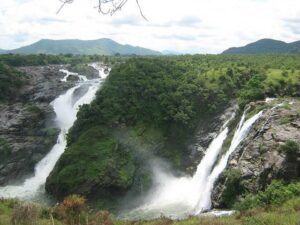 Shimsha sources in the Devrayanadurga Hill, Tumkur District, Maharashtra. It meets Kaveri in Chamarajanagar. The significant sub-tributaries are, Hebbahalla, Kanva, Chikkahole, Veeravaishnavi, Kanihalla, and Mullahalla. The important dams are Markonahalli Dam in Tumkur. Its total length is 221 km., with a river bed of 8469 sq. km.
Shimsha sources in the Devrayanadurga Hill, Tumkur District, Maharashtra. It meets Kaveri in Chamarajanagar. The significant sub-tributaries are, Hebbahalla, Kanva, Chikkahole, Veeravaishnavi, Kanihalla, and Mullahalla. The important dams are Markonahalli Dam in Tumkur. Its total length is 221 km., with a river bed of 8469 sq. km.
Manjira is a tributary of Godavari river. It originates in Karnataka’s Bala Ghat range. Karanja is a sub-tributaru of tjhis river. Karanja Dam is built across this 116 km long river, flowing over a river bed of 4430 sq. km.
The Nandi Hills of the Kolar district is the originating point of both North and South Pennar.
Talagavara of Kolar marks the source of Palar. It cuts through three states of Karnataka, Tamil Nadu, and Andhra Pradesh. Its total length is 348 km and the area is 17,633.19 sq. km. Cheyyaru river is an important sub tributary.
West Flowing Rivers of Karnataka:
Supa of the Uttara Kannada district of Karnataka marks the source of the Kali river. The important sub tributaries include Pandari, Tattihalli, Madri, and Kaneri, while the vital waterfalls are Lalguli Falls in Yelappur Taluk. Supa Dam is a noteworthy dam across the river. The length of the river extends up to 184 km and the river bed is of 4,297 sq. km.
Gangavalli river originates in the Western Ghats of South Dharwad district in Karnataka for a length of 152 km over a river bed of 3,574 sq. km.
Sharavati river sources from the Ambutirtha Mountain, Thirthahalli Village, Shimoga district, Karnataka. Haridra and Yennehole are its major sub tributaries, while the Linganamakki Dam of Sagara Taluk is striking. It is the home of the famous 253 metered Jog Falls. The total length of the river is 128 km, with an area of 2,771 sq. km.
The Aghanashini river originates in Gadihalli Sirisi of the Western Ghats, Uttara Kannada, Karnataka. It houses loads of sub tributaries including Masti mane Halla, Chandika hole, Bakurhole, Santeguli, Hulidevara Kodalu, Divali, Donihalla, Badala, etc. Its total length is 84 km and the area is 1350 sq. km.
Netravati rises in Ballalarayana Durga region of Kuderemuka in Chikmagalur district of Karnataka. Its significant sub tributaries include Phaliguni, Kumaradhara, Charmadi, Shishila, etc. The Netravati Dam in Dharmasthala is noteworthy, while Bandaje falls is important. The area of the river is 3,355 sq. km. with a total length of 96 km.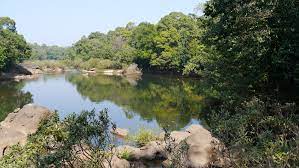
Varahi, also known as the Haladi river, originates in Kavaledurga of the Shimoga district in Karnataka. This 66 km long river is the home of Kunchikal Falls. Its total area is 221.38 sq. km.
Sita river rises in the Western Ghats, near Hebri of Narasimha Pavatha in Agumbe of Shivamogga in Karnataka. Its total length is 60 km. and is the home of Barkana Falls.
Some of the other important rivers are the Swarna river and the Mahadayi river. Mahadayi is also the smallest river in Karnataka.
Conclusion:
These rivers of Karnataka play a very significant role, influencing the entire life cycle of the planet. They maintain biodiversity and the ecological balance. These rivers form the backbone of the whole state providing them support in the form of providing water, as well as energy. As inhabitants of this Earth, it is our responsibility to reduce water pollution so that these rivers can retain their health and purity, and in turn, help the world being a better place for generations to come.
–by Poulami Sengupta
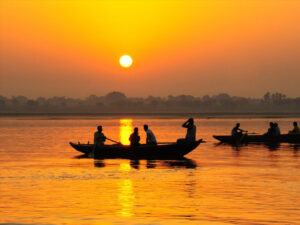

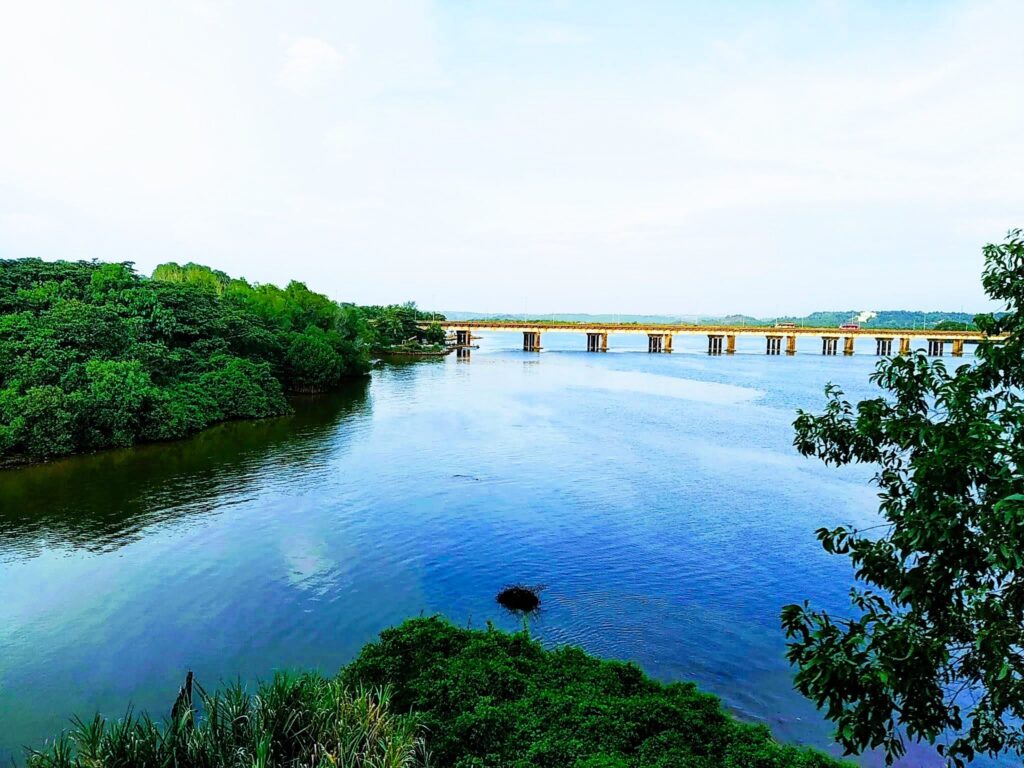
Devrayanadurga Hill, Tumkur District, Maharashtra.
Tumkur District is not in Maharashtra. It is part of Karnataka.